Every marketer feels it, the fatigue that now shapes the digital marketplace. People scroll faster, engage less, and remember almost nothing. The world hasn’t run out of attention, but it has run out of patience. Marketing has turned into a competition for minds that are already overstimulated and emotionally drained.
The numbers that are used to define success, impressions, reach, and frequency no longer indicate what truly matters. A campaign can get millions of views and still make no impact. The issue isn’t a lack of creativity or budget; it’s the loss of mental availability. With a constant flow of messages, audiences develop a quiet defense mechanism: selective inattention.
The mechanics of fatigue
The current content environment has pushed human attention beyond its natural limits. Endless feeds, algorithmic repetition, and constant notifications have altered how people process information. Instead of curiosity, they build resistance. Each additional exposure weakens both cognitive and emotional engagement.
What used to be an advantage, more channels and more touchpoints, has become a burden. Every platform demands presence, but constant presence dilutes meaning. When every brand is always on, the audience learns to ignore them.
What this does to brands
Marketers often confuse interaction with attention. A like, a comment, or a click may seem like engagement, but it doesn’t confirm understanding or emotional impact. True engagement leaves a lasting impression: memory, association, and preference. The challenge is not just to provoke a reaction but to maintain presence in a distracted mind.
That requires a fundamental redesign of communication strategies. Instead of pushing more creative variations, brands should rethink cadence, pacing, and silence. Fatigue cannot be addressed by innovation in content alone; it requires recognizing cognitive limits. Brands that integrate these changes into a broader marketing strategy.
The illusion of engagement
Fatigue changes how consumers see marketing. They no longer prefer visibility; they value relief. The most effective messages often pause rather than push, with brands that offer space, context, and time. Those who keep shouting in a crowded room are seldom heard.
This shift prompts a deeper question: what does it mean to be relevant when attention is limited? It’s no longer about inserting yourself into the conversation but earning the right to participate. Emotional intelligence becomes more important than media spending. Trust, restraint, and timing become key assets.
The return of quiet marketing
We are entering a time when restraint becomes a strategy. The concept of quiet marketing, which involves deliberate, measured, and emotionally intelligent communication, is beginning to outperform aggressive omnipresence. It responds to saturation, not nostalgia.
Quiet marketing doesn’t mean silence. It means clarity. It involves removing unnecessary claims and letting meaning shine through. It’s about being memorable through tone, not volume. When brands communicate as if their audience is human – tired, selective, and self-protective – they start to rebuild trust.
A new metric of success
Attention fatigue necessitates a new definition of performance. Instead of chasing reach, marketers will start measuring relief: how much cognitive strain a brand takes off its audience. A positive interaction will be one that restores energy rather than depletes it.
The most forward-thinking marketers already see this shift. They focus less on filling every second of the consumer journey and more on creating meaningful moments within it. They are learning that in a tired market, generosity, giving time back to the audience, is the most persuasive form of communication.
Marketing for a tired audience isn’t about being louder. It’s about realizing that attention is no longer freely given; it must be earned with care. The future belongs to brands that know when to speak and when to let the audience breathe.

